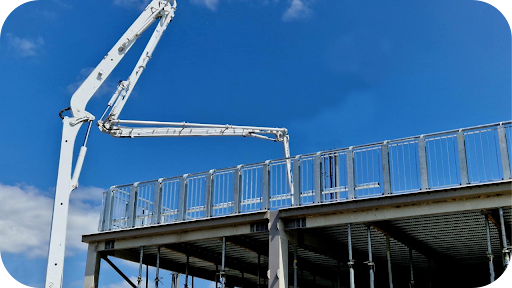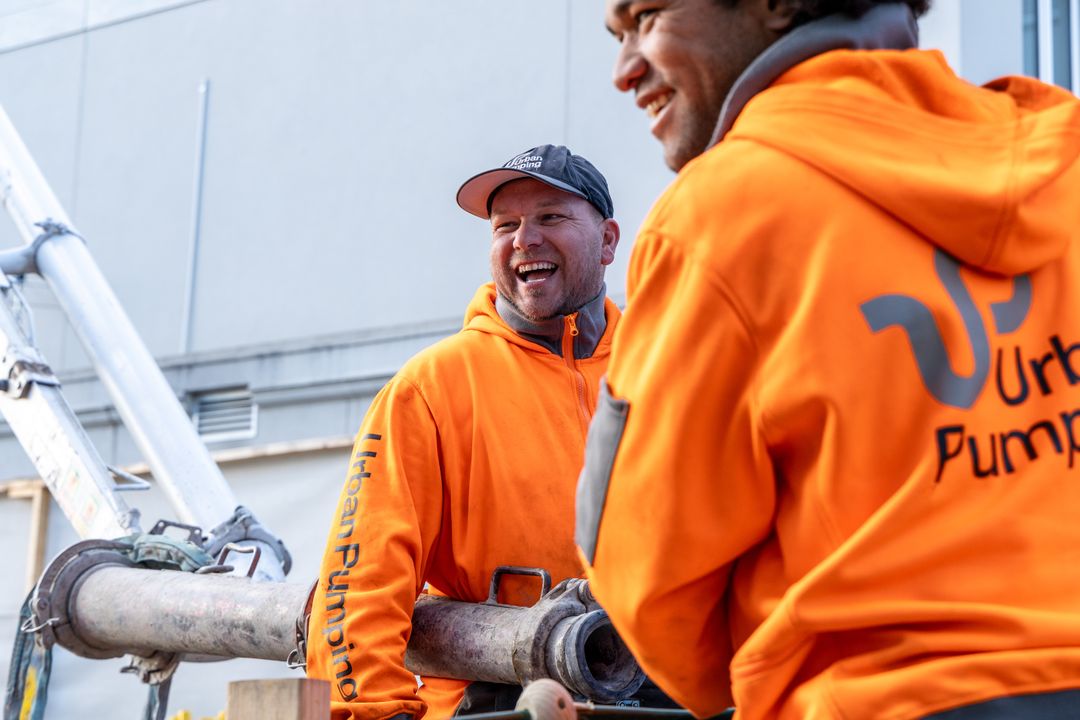
High-rise construction depends on reliable concrete delivery systems to keep projects moving efficiently. Concrete pumping allows builders to transport material vertically through specialised pipes, reaching multiple floors with speed and precision. This method eliminates the limits of cranes and manual handling while ensuring consistent quality and structural integrity.
In today’s fast-paced construction environment, understanding how concrete pumping works is essential for safe, efficient, and cost-effective results. It’s a process that combines advanced equipment, expert coordination, and technical skill to make high-rise construction possible.
Let’s jump in.
High-rise concrete pumping is the process of transporting liquid concrete from ground level to elevated floors through a system of high-pressure pipes and pumps. It’s a crucial part of constructing multi-storey buildings, where traditional methods like cranes or wheelbarrows are far too slow and inefficient.
The system works by using a powerful pump that pushes concrete through steel or rubber pipelines to reach the desired height. Depending on the structure, additional equipment, such as placing booms, may be installed on upper floors to distribute the concrete more precisely.
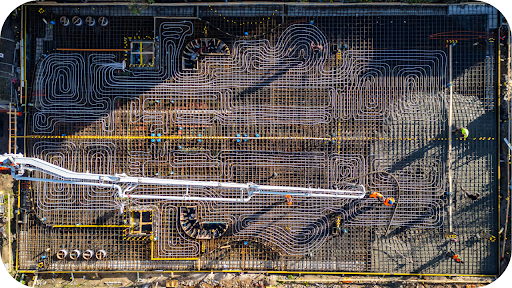
This technique ensures continuous concrete flow, faster placement, and higher accuracy. It allows teams to maintain quality and consistency across all levels of a structure, regardless of height or complexity.
High-rise pumping has become an industry standard for modern developments, offering reliability and efficiency that traditional methods simply cannot match.
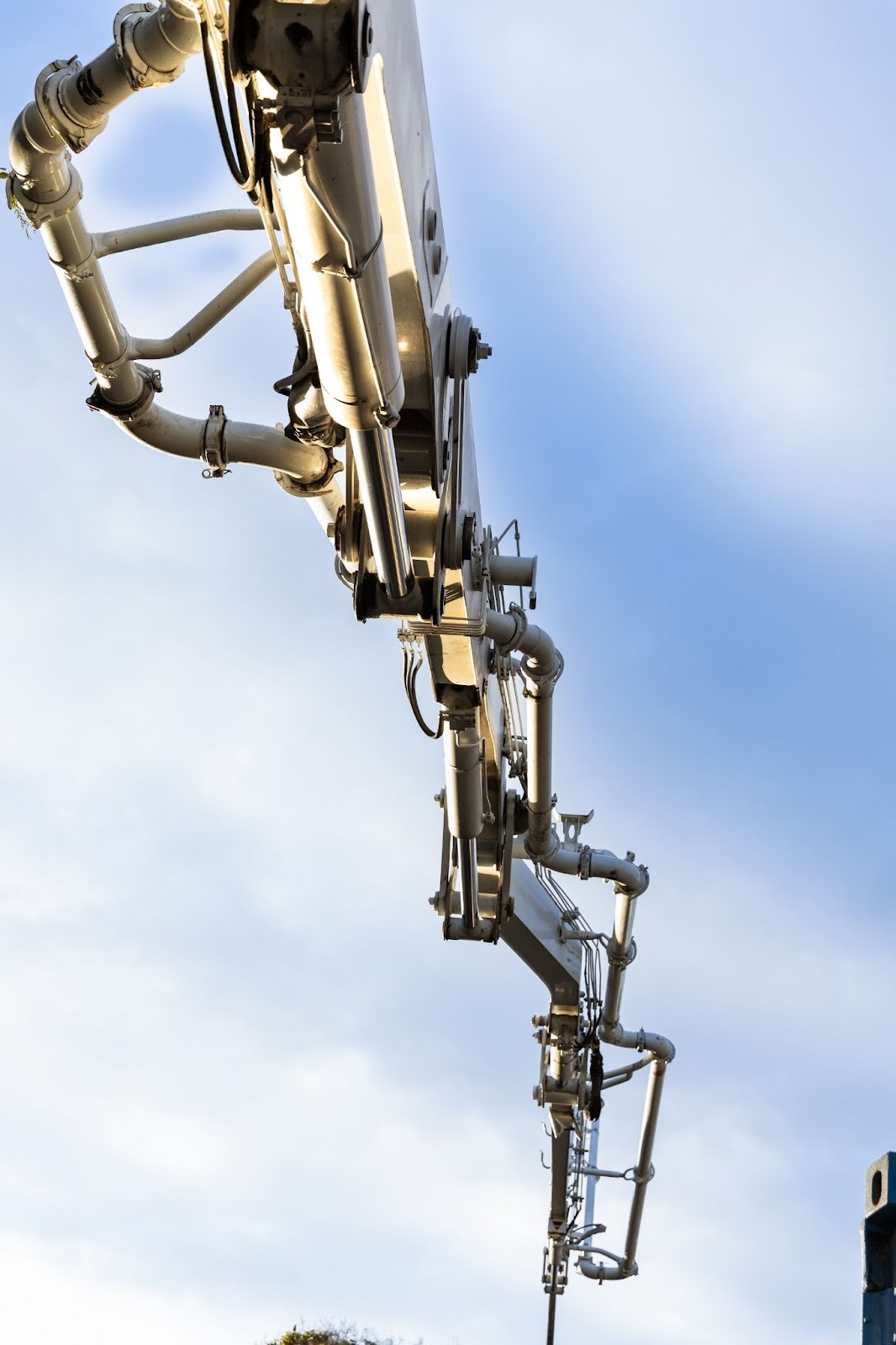
Modern concrete pumping relies on advanced machinery designed to handle extreme vertical and horizontal pressure. A high-rise pump consists of several key components: a hopper where concrete is poured, a series of hydraulic cylinders that drive the concrete through the pipeline, and a network of steel pipes or rubber hoses that transport it upward.
The pressure required increases with height, meaning the equipment must deliver steady, high-power output without interruption.
The concrete mix also plays a crucial role; it must be workable enough to flow but dense enough to maintain strength.
Sensors and control systems now allow operators to monitor pressure, flow, and consistency in real time, ensuring that each cubic metre of concrete reaches its destination safely and evenly. This technology-driven precision is what makes high-rise pumping both efficient and dependable.
There are two main types of pumps used in high-rise construction: boom pumps and line pumps.
Boom pumps are mounted on trucks and equipped with a hydraulic arm that extends and positions the concrete exactly where it’s needed. They are ideal for high structures, as the boom can reach elevated floors with minimal manual handling.
Line pumps, on the other hand, use flexible hoses or pipes laid along the ground or scaffold. They are suited to smaller projects or sites with limited access. In tall buildings, line pumps are often connected to stationary placing booms that distribute concrete across upper levels as the structure rises.
Choosing between the two depends on project height, site layout, and the required pumping distance. Both systems, when properly maintained and operated, deliver fast, consistent, and controlled concrete placement that supports structural precision and safety.
With today’s technology, concrete can be pumped to extraordinary heights, up to around 400 metres, comparable to some of the tallest skyscrapers in the world. The height limit depends on several factors, including the pump’s power, the pipe diameter, and the mix design of the concrete itself.
As concrete travels upward, it faces resistance due to friction and gravity, requiring greater pressure the higher it goes. Engineers calculate this carefully to ensure the concrete remains workable and does not segregate or lose quality. For extremely tall structures, intermediate pumps or booster stations may be installed on higher floors to maintain consistent pressure.
These advancements make it possible to complete large vertical pours quickly and efficiently. By combining powerful equipment, precision mix design, and technical planning, contractors can achieve exceptional results even on projects that reach into the clouds.

Efficient high-rise pumping depends on a combination of technical and environmental factors. The concrete mix design is one of the most important; if it’s too stiff, it won’t flow properly; if it’s too wet, it can separate or weaken. The pipe diameter and layout also influence how easily the concrete moves through the system, with too many bends or narrow sections increasing friction and slowing output.
Pump pressure must be carefully managed to maintain a steady flow, especially as height increases. Temperature, humidity, and wind conditions can also affect the curing process and timing of pours. Regular maintenance of the pumping equipment is equally essential to avoid blockages or breakdowns during operation.
When all these elements are aligned, high-rise pumping becomes a smooth, reliable process that keeps projects on schedule and ensures the structural integrity of every floor.
Proper planning is the foundation of every successful high-rise pumping operation.
Before work begins, project teams assess the building layout, identify optimal pipeline routes, and determine the placement of pumps and booms. Coordination between engineers, site supervisors, and operators is vital to ensure a seamless workflow from the first pour to the final floor.
Timing is another critical factor. Concrete must be delivered, mixed, and pumped within specific timeframes to prevent setting inside the pipes. Logistics also involve managing delivery trucks, staging areas, and traffic flow on busy construction sites.
Detailed planning reduces downtime and improves safety by ensuring all teams know their roles and sequences. For complex projects, this level of organisation can make the difference between a smooth pour and costly delays.
Safety is at the core of every high-rise pumping operation. The high pressures involved mean that even small mistakes can lead to serious risks. Regular inspections of pipes, hoses, and valves are essential to detect wear or potential leaks before they occur.
Operators are trained to monitor pressure levels, ensure proper connections, and maintain clear communication across the site. Barriers and safety zones are used to protect workers from moving equipment or potential bursts.
Quality control runs alongside safety, with concrete samples tested for slump and strength to confirm mix consistency. Timely placement prevents cold joints, while continuous monitoring ensures even distribution across each floor. Combining strict safety measures with disciplined quality control guarantees a reliable, high-standard result from start to finish.
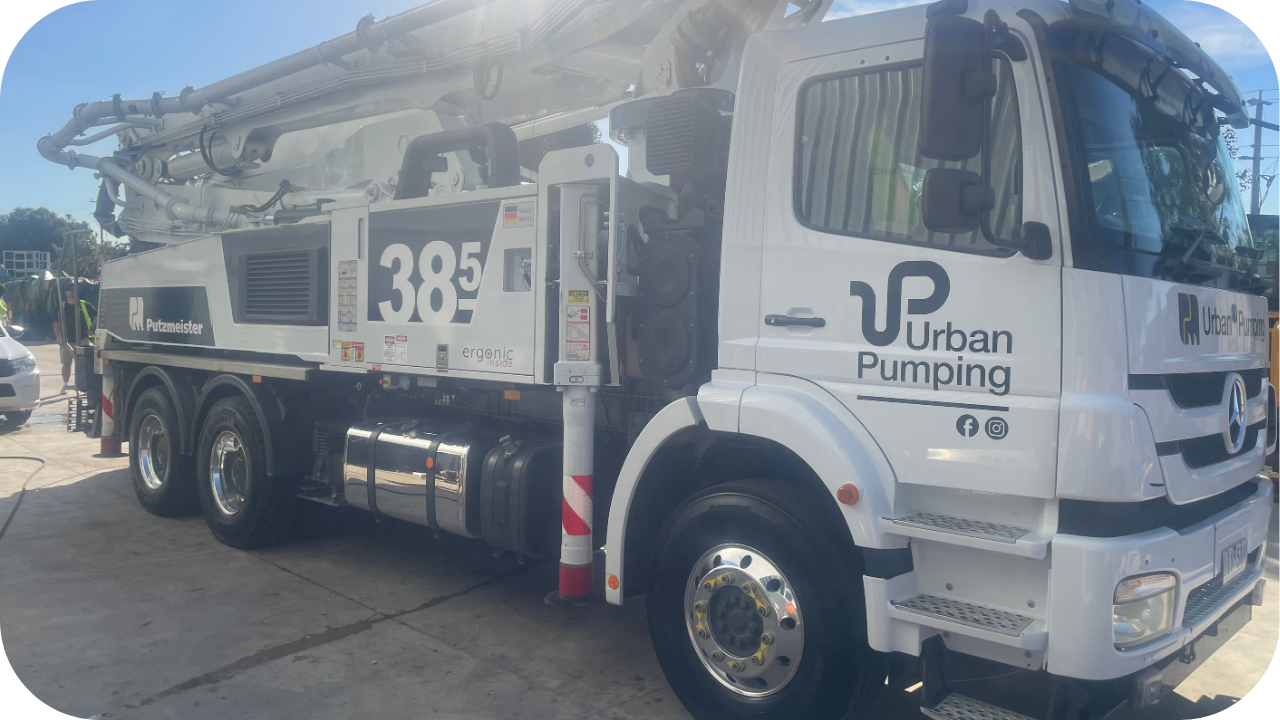
High-rise concrete pumping offers clear benefits that go beyond speed and convenience. It’s a method that improves quality, enhances safety, and keeps large projects running smoothly from the ground up. Here are the main advantages:
Concrete pumping has redefined what’s possible in vertical construction, making it the most reliable and productive method for modern high-rise projects.
Selecting the right concrete pumping company is one of the most important decisions in any high-rise project. The right partner brings not just equipment but expertise, planning, and a commitment to safety. A qualified team ensures that each pour runs efficiently and meets the highest structural standards.
When choosing a pumping partner, consider the following:
A dependable pumping partner ensures quality, consistency, and peace of mind throughout every stage of construction.
Urban Pumping is built on experience, precision, and a deep understanding of high-rise concrete delivery. Our team specialises in complex, multi-storey projects where timing, coordination, and accuracy matter most. We combine advanced equipment with skilled operators to ensure every pour is handled safely and efficiently from start to finish.
Our fleet includes modern boom pumps, stationary pumps, and placing systems capable of handling any height or site condition. Every piece of equipment is maintained to the highest standard, ensuring reliability and consistent performance on every job.
What sets Urban Pumping apart is our focus on planning and communication. We work closely with builders, engineers, and site managers to design tailored pumping solutions that meet project timelines and safety requirements. Whether it’s a residential tower, commercial development, or mixed-use structure, we deliver the technical expertise and efficiency needed to keep construction moving smoothly.
Urban Pumping is not just a service provider, we’re a trusted partner committed to quality, safety, and long-term client success.
High-rise concrete pumping is essential for building safely and efficiently at scale. It allows teams to deliver consistent, high-quality results while saving time, reducing labour, and improving overall site safety. From equipment selection to planning and on-site coordination, every detail contributes to the strength and success of the final structure.
For projects that demand reliability and precision, partnering with experienced professionals makes all the difference. Urban Pumping combines modern technology, skilled operators, and a strong focus on safety to ensure smooth performance on every pour.
Ready to streamline your next high-rise project? Contact Urban Pumping today to discuss your concrete pumping needs and get expert support from start to finish.
